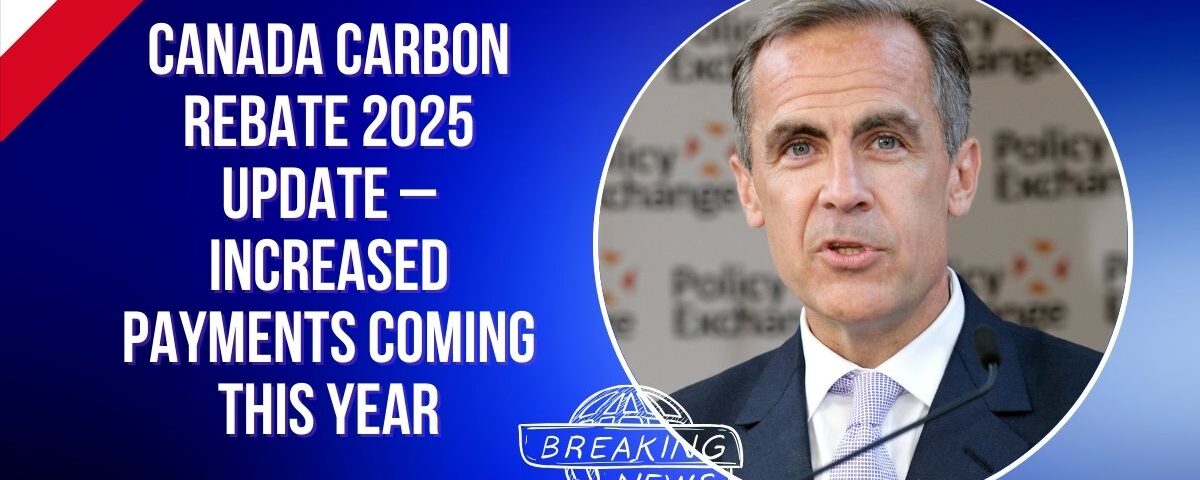Millions of Canadian households are benefiting from increased quarterly climate payments under the Canada Carbon Rebate 2025. The latest update not only raises payment amounts but also improves accessibility and strengthens the country’s focus on environmental accountability. At a time when inflation and climate concerns are top of mind, this update offers much-needed financial and policy support.
Key Changes in the 2025 Canada Carbon Rebate
In 2025, the federal government made several key adjustments to the carbon rebate system to better align with rising carbon pricing and inflation. Based on input from households and environmental advocates, the rebate structure now reflects more precise income and geographic considerations.
What’s New in 2025:
- Higher quarterly payments for eligible individuals and families.
- Automatic direct deposits for most taxpayers.
- Simplified eligibility based on 2024 income tax returns.
- Updated payment rates aligned with the federal carbon price increase to $95 per tonne as of April 2025.
- Rural top-up of 20% for eligible residents in less urbanized areas.
These enhancements are intended to ease the burden of carbon pricing while rewarding environmentally conscious choices.
2025 Canada Carbon Rebate Payment Amounts by Province
As of July 2025, eligible Canadians are receiving increased quarterly rebate amounts. The payment amount varies by province, household size, and rural status.
| Province | Individual | Couple | Family of 4 | Rural Supplement |
|---|---|---|---|---|
| Alberta | $140 | $210 | $280 | +20% |
| Ontario | $110 | $165 | $220 | +20% |
| Manitoba | $120 | $180 | $240 | +20% |
| Saskatchewan | $130 | $195 | $260 | +20% |
| Nova Scotia | $100 | $150 | $200 | +20% |
| Newfoundland | $105 | $157 | $210 | +20% |
Upcoming deposit dates include July 2025, October 2025, January 2026, and April 2026.
Household Impact of the 2025 Climate Rebate
The increase in climate payments offers significant relief amid rising utility and fuel costs. According to the Parliamentary Budget Officer, roughly 80% of households will receive more through the rebate than they pay in carbon pricing.
For example, an Alberta family of four could receive up to $1,120 annually, excluding the rural supplement. This model helps ensure that low- and middle-income families come out ahead while still incentivizing carbon-conscious behavior.
Why the Carbon Rebate is Crucial in 2025
With Canada’s carbon pricing set to rise steadily until 2030, this rebate is a critical tool in supporting climate policy. It affirms the “polluter pays” principle while providing direct compensation to the public.
The rebate also promotes transparency and trust. Unlike tax credits that can be complex, the Canada Carbon Rebate is predictable, automatic, and visible on your bank statement—making it easier for Canadians to track and rely on.
How to Receive the Canada Carbon Rebate in 2025
Getting your Canada federal rebate is simple:
- File your 2024 income tax return.
- Update your direct deposit details with the CRA if needed.
- Check your bank account for payments labeled “Climate Action Incentive” or “CAIP.”
No additional applications are required—payments are issued automatically based on tax data.
Conclusion
The Canada Carbon Rebate 2025 demonstrates the government’s dedication to merging climate responsibility with economic support. With larger payments, rural supplements, and a streamlined process, the rebate helps households manage rising costs while staying committed to a cleaner future. To make sure you receive your benefits, file your taxes on time and keep your banking details current.
Frequently Asked Questions
1. Who qualifies for the 2025 Canada Carbon Rebate?
Anyone who files a 2024 income tax return and lives in a rebate-eligible province is generally qualified. Payments are based on household size and region.
2. Do I need to apply separately for the rebate?
No. If you’re eligible, the Canada Revenue Agency (CRA) will automatically issue your payment via direct deposit.
3. What is the rural supplement and who gets it?
Eligible residents in rural or small communities receive an additional 20% on top of the base rebate. Eligibility is determined by your postal code.
4. How often are the rebate payments made?
Rebate payments are issued quarterly—in July, October, January, and April each year.
5. Can newcomers or new taxpayers receive the carbon rebate?
Yes, provided they file a Canadian tax return and meet residency and eligibility requirements based on their province and family status.
